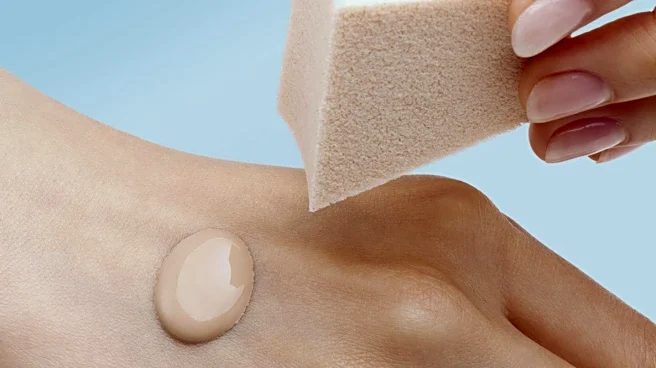What is the story about?
What's Happening?
Incyte has received FDA approval for Opzelura (ruxolitinib) cream, a topical Janus kinase (JAK) inhibitor, for treating mild to moderate atopic dermatitis (AD) in non-immunocompromised children aged 2-11. This marks the third U.S. approval for Opzelura, which is already indicated for nonsegmental vitiligo in patients 12 years and older. The approval is based on Phase 3 trial data showing significant efficacy and no new safety concerns. Opzelura offers a steroid-free treatment option, addressing the needs of children with AD whose conditions are not well controlled by existing therapies.
Why It's Important?
The approval of Opzelura for pediatric use is significant as it provides a new, non-steroidal treatment option for children suffering from atopic dermatitis, a common and chronic skin condition. This development is crucial for families seeking effective therapies with fewer side effects than traditional steroid treatments. By expanding the indications for Opzelura, Incyte is enhancing its portfolio and addressing a substantial unmet need in pediatric dermatology, potentially improving the quality of life for millions of children affected by AD.
What's Next?
With the FDA approval, Incyte is likely to focus on the commercial rollout of Opzelura for pediatric patients, including efforts to educate healthcare providers and parents about its benefits and usage. The company may also explore further clinical trials to expand Opzelura's indications or improve its formulation. As more children begin treatment with Opzelura, ongoing monitoring of its safety and efficacy will be essential to ensure optimal patient outcomes.
Beyond the Headlines
The approval of Opzelura highlights the broader trend of developing targeted therapies for chronic conditions, emphasizing the importance of personalized medicine. It also raises ethical considerations regarding the use of JAK inhibitors in children, given potential long-term effects. As the healthcare industry continues to innovate, balancing efficacy with safety remains a critical challenge.
AI Generated Content
Do you find this article useful?













